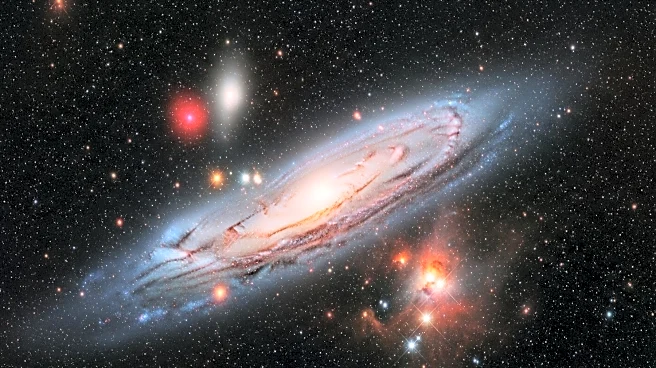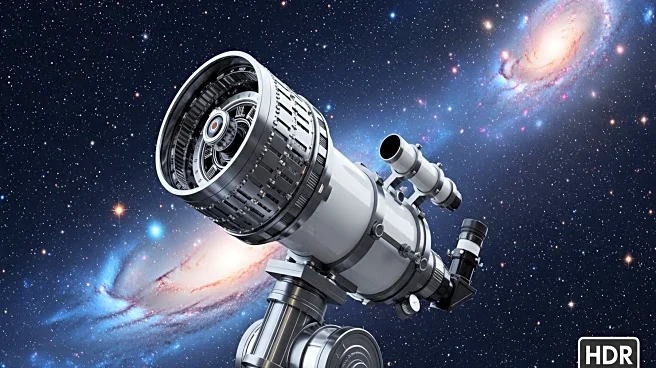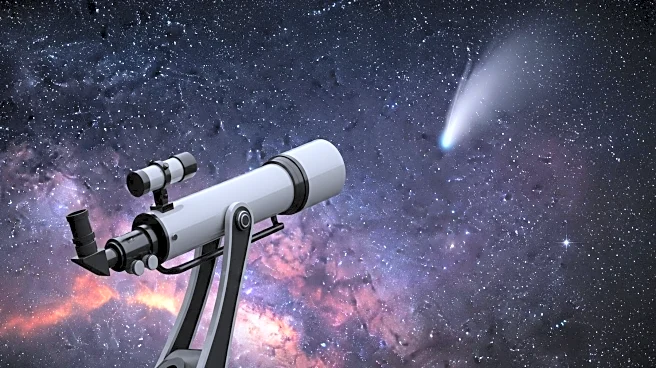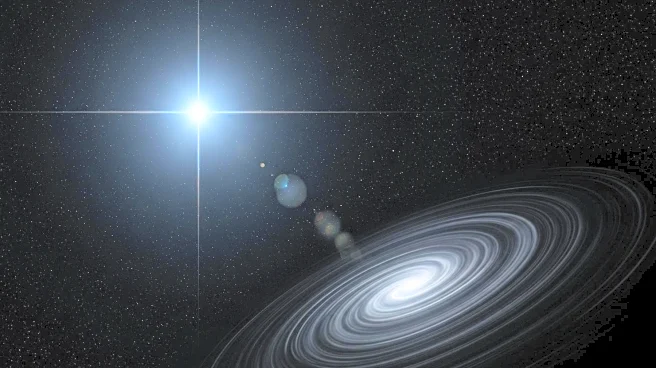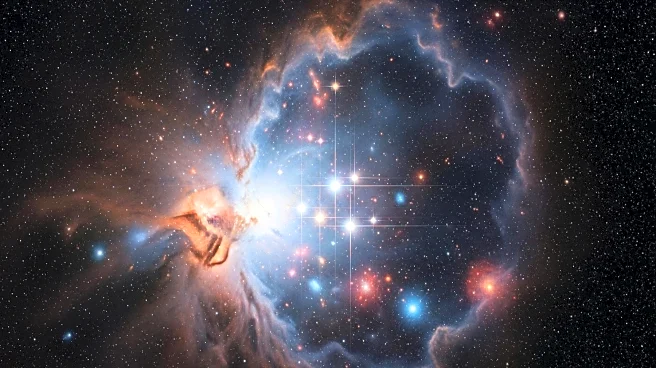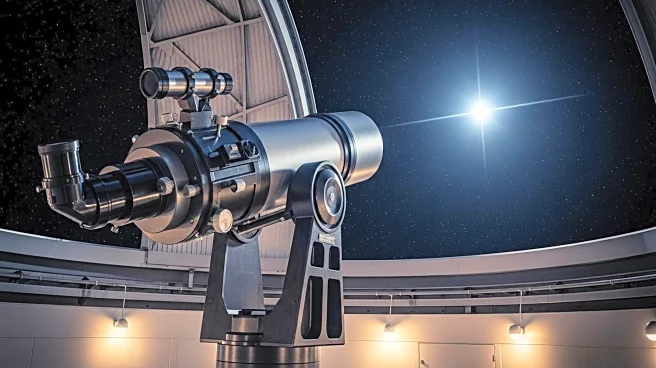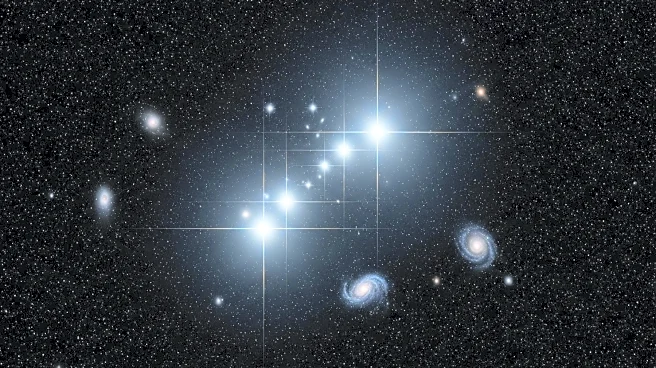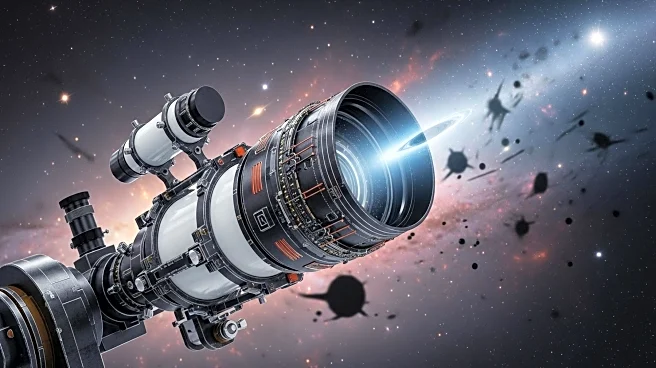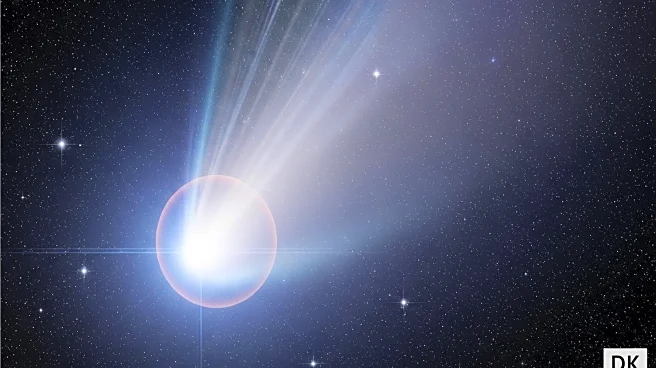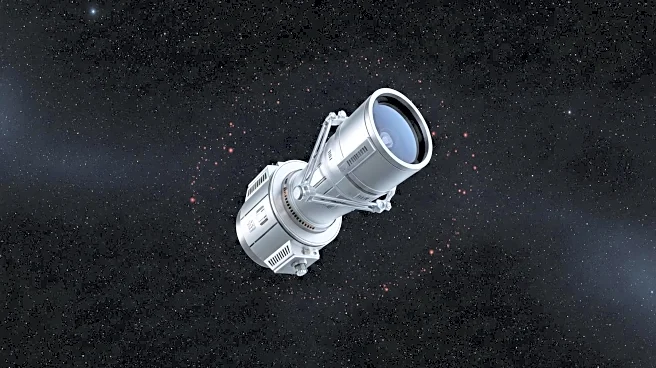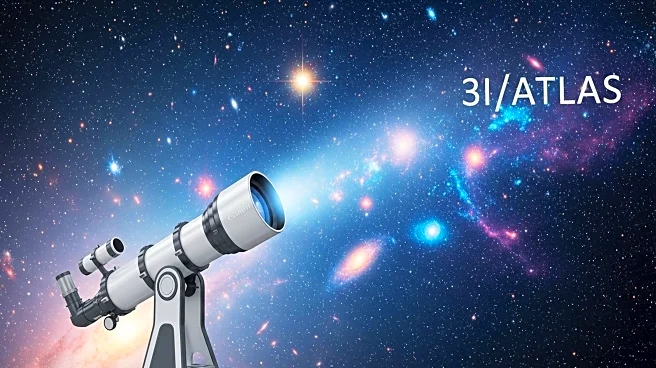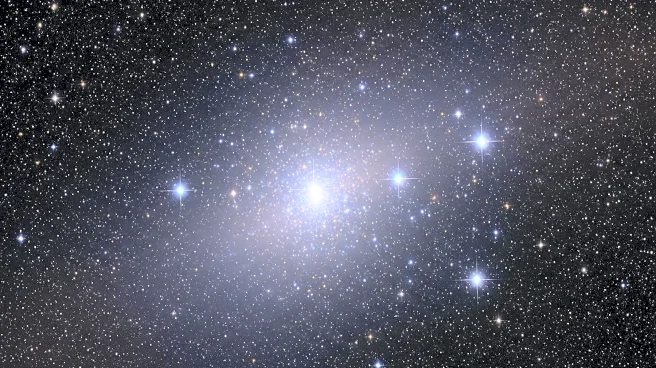What is the story about?
What's Happening?
The Hubble Space Telescope has captured a detailed image of the Cigar Galaxy, also known as Messier 82 (M82), located 12 million light-years away in the constellation Ursa Major. This galaxy is characterized as a starburst galaxy, forming stars at a rate ten times faster than the Milky Way. The image reveals the galaxy's core, which is densely packed with super star clusters, each containing hundreds of thousands of stars. These clusters are more luminous than typical star clusters. The Hubble's Advanced Camera for Surveys (ACS) High Resolution Channel, which was operational until 2007, provided the detailed observations. The James Webb Space Telescope has also observed the Cigar Galaxy, producing infrared images in recent years.
Why It's Important?
The discovery and detailed imaging of the Cigar Galaxy's core provide significant insights into the processes of star formation and evolution in starburst galaxies. Understanding these processes is crucial for astronomers as it helps to unravel the mysteries of galaxy formation and the lifecycle of stars. The Cigar Galaxy serves as a nearby laboratory for studying these phenomena, offering a glimpse into the intense star-forming activities that were more common in the early universe. This research can potentially lead to advancements in astrophysics and enhance our understanding of the universe's history and structure.
What's Next?
Future observations by the James Webb Space Telescope and other advanced instruments may continue to explore the Cigar Galaxy, focusing on its star-forming regions and the dynamics of its super star clusters. These studies could provide further insights into the mechanisms driving starburst activity and the role of such galaxies in the cosmic ecosystem. Continued research may also explore the implications of these findings for other starburst galaxies and their contribution to the universe's evolution.
Beyond the Headlines
The study of the Cigar Galaxy highlights the importance of advanced space telescopes like Hubble and James Webb in expanding our understanding of the cosmos. The technological advancements in these telescopes allow astronomers to peer deeper into space and time, revealing phenomena that were previously hidden. This underscores the ongoing need for investment in space exploration and the development of new technologies to continue pushing the boundaries of human knowledge.
AI Generated Content
Do you find this article useful?
